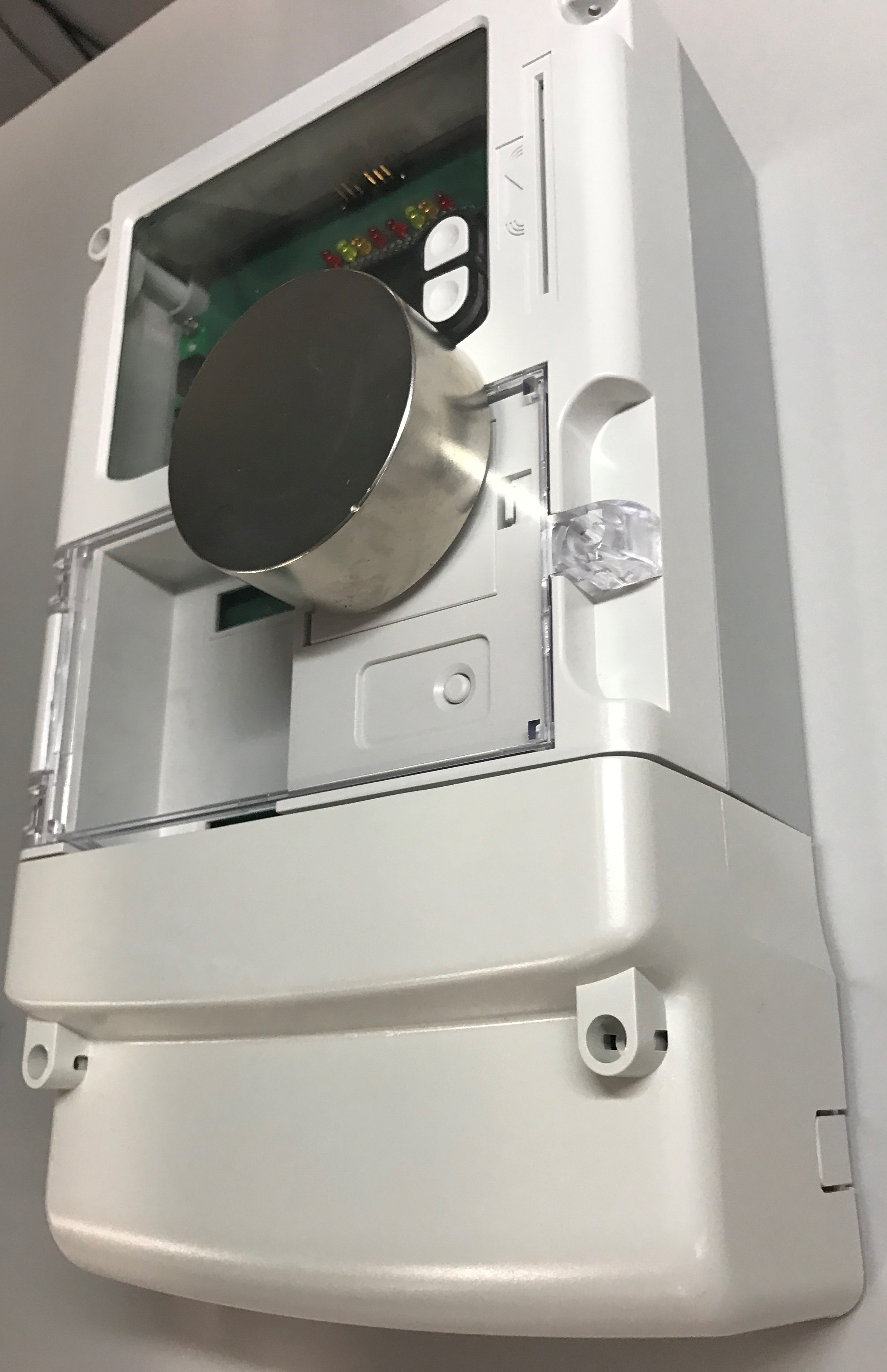SBOA514A March 2021 – August 2021 DRV5032 , TMAG5170 , TMAG5231 , TMAG5273
2 Magnetic tamper detection
Magnetic tamper detection
External magnetic fields may affect magnetically-susceptible components in some systems. Example applications may include electricity meters, gas meters, door and window sensors, cordless power tools, and electronic smart locks. To deal with external magnetic fields tampering with the system, a Hall position sensor can be used to provide an alert to the system when the external magnetic field is beyond a predefined limit. This limit should be selected so that the Hall position sensor detects external magnetic fields before they are strong enough to significantly affect the operation of the system.
To detect strong magnetic fields from either the North or South poles of the magnet, an omnipolar Hall position sensor is often used. The omnipolar sensor will sense limits associated with both polarities of the magnet. In addition, three 1-dimensional Hall sensors arranged across three directions or one 3-dimensional Hall sensor can be used to detect strong magnets across all three dimensions. If only permanent magnets need to be detected, Hall switches are commonly used and the magnetic limit is set by the BOP specification of the Hall switch. However, if an AC magnetic field must also be detected, linear Hall sensors can be used instead. If the system is powered from a battery, a duty cycle mode operation is also common, where the Hall position sensor alternates between active measurement mode and low-power sleep mode to reduce the average current consumption.
As an example, in electricity meters, a strong magnet can paralyze any current transformer current sensors or power supply transformers. As a result, strong magnets are commonly placed on electricity meters to steal electricity. The tampering magnet can be cylinder magnets as shown in Figure 2-1, or even bar magnets. To counteract magnetic tampering, meter manufacturers often use Hall position sensors to detect whenever external magnetic fields are beyond a predefined limit. In some cases, the meter deals with detected magnetic tampering by overcharging the customer as a precaution.
 Figure 2-1 Magnetic Tampering in Electricity Meters
Figure 2-1 Magnetic Tampering in Electricity Meters